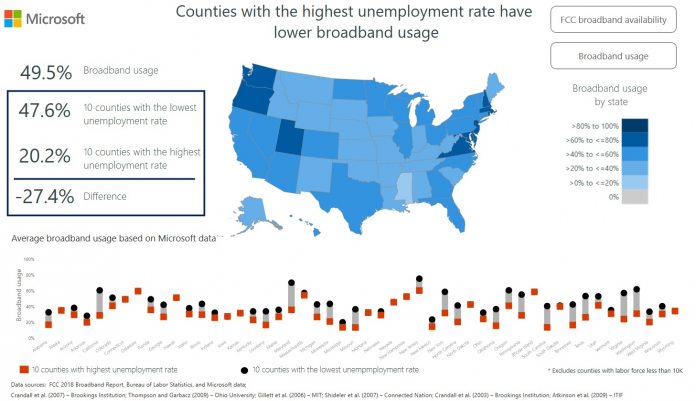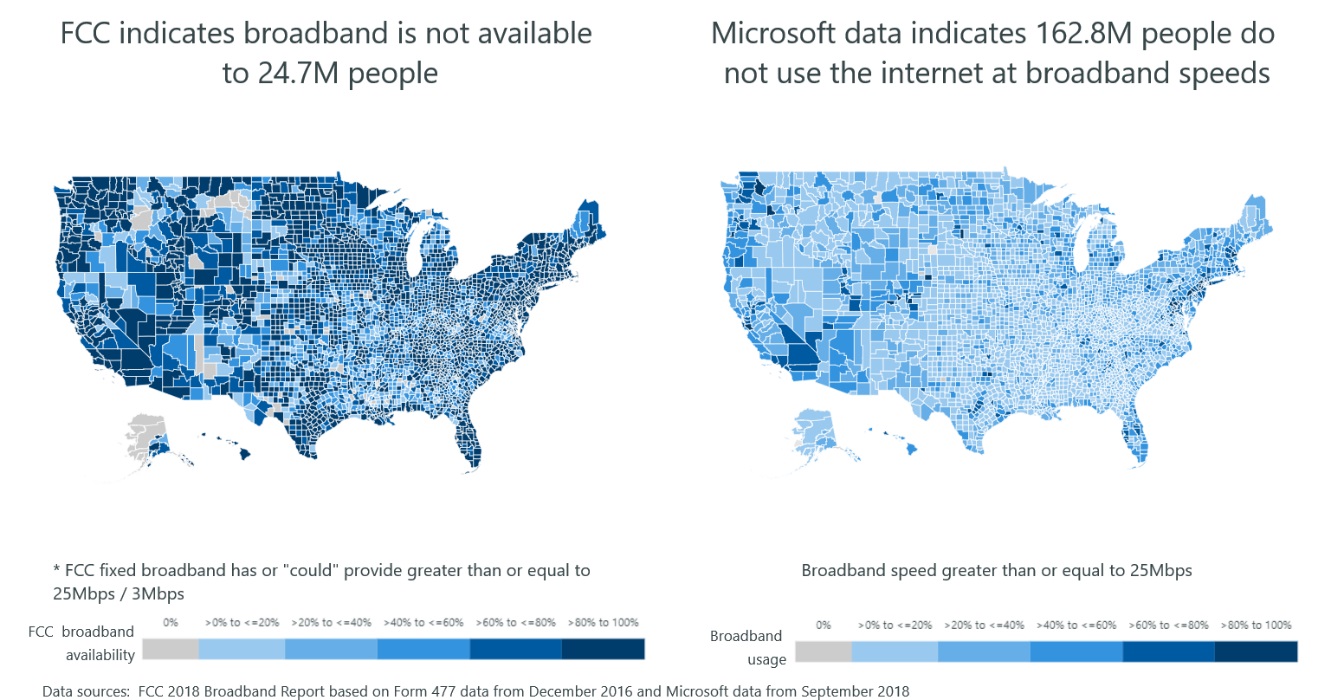Pai credited the FCC’s own strategies for increasing broadband availability. He says the regulatory body has helped bridge the country in terms of increased Wi-Fi capabilities. Pai believes “removing barriers to infrastructure investment” and the Connect America Fund initiative has brought more broadband access to rural communities. Microsoft disagrees and says the vast improvements Pai highlights may have come from bad data. Pai referenced the Draft of the 2019 Broadband Deployment Report to reach his conclusions. Microsoft points out advocacy group Free Press found new ISP Barrier Communications over-reported its coverage. Barrier Communications reports each census block across eight states instead of specific census blocks it provides coverage to. Free Press says the reporting method was wrong so Barrier Communications data should be removed. One removed, the organization says, “the number of Americans lacking access to a fixed broadband connection at the 25Mbps/3Mbps threshold declined to 21.3 million, not 19.4 million”. In its 2018 Broadband Deployment Report, the FCC claims that “over 24 million Americans still lack fixed terrestrial broadband at speeds of 25Mbps/3Mbps”. Furthermore, the commission adds “92.3 percent of all Americans have access to fixed terrestrial broadband at speeds of 25Mbps/3Mbps”.
Microsoft’s Data
A vote to greelight the 2019 report will be ahead of any publication. Microsoft says in the light of the Free Press information; the report should be delayed, and bad data should be highlighted. The company says many more Americans are without broadband at 25Mbps/3Mbps speeds than the FCC says. “The government’s most current broadband statistics come from the FCC and suggest 25 million Americans lack access to a broadband connection. There’s strong evidence, though, that the percentage of Americans without broadband access is much higher than the figures reported by the FCC,” wrote John Kahan, Microsoft’s chief data analytics officer wrote. Microsoft’s own data shows the situation is much worse. Indeed, the company says “162.8 million people are not using the internet at broadband speeds“. “Our results align well with the FCC’s broadband subscription data and the Pew Research numbers. Which suggests these data sets are far closer to the mark then the broadband access data reported by the FCC and leaves us with the inescapable conclusion that today there exists no accurate, comprehensive and public estimate of broadband coverage in the United States,” adds Kahan.





